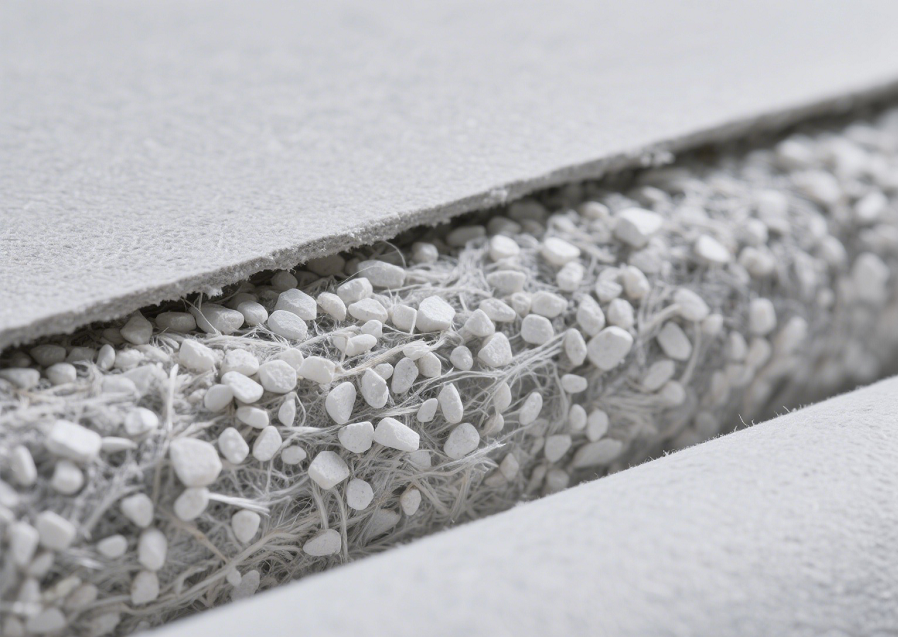Oxyde de magnésium (Mgo), avec son excellente stabilité chimique, résistance à haute température, et propriétés d'isolation électrique, sert d’additif fonctionnel clé dans divers produits d’isolation électrique. Ses principaux rôles sont les suivants:

Le rôle de l'oxyde de magnésium dans les matériaux isolants
1. Améliorer les performances d’isolation électrique des matériaux
- Bloquer la conduction actuelle: L'oxyde de magnésium lui-même a une résistivité volumique extrêmement élevée (généralement supérieur à 10¹⁴Ω·cm). Lorsqu'il est ajouté à des matériaux isolants (comme les peintures isolantes, papiers isolants, et couches d'isolation des câbles), il peut bloquer efficacement les fuites ou les pannes de courant, améliorer la rigidité diélectrique (résistance au claquage de tension) du matériel, et assurer le fonctionnement sûr des équipements électriques dans les environnements à haute tension.
- Suppression des décharges partielles: Dans les matériaux isolants haute tension, l'oxyde de magnésium peut être uniformément dispersé dans la matrice, réduisant les défauts tels que les bulles et les impuretés à l'intérieur du matériau, et atténuer le phénomène de concentration de champ électrique local. Cela supprime l'érosion des matériaux isolants par décharge partielle et prolonge la durée de vie de l'isolation..
2. Améliorer la résistance aux hautes températures et la stabilité thermique
- Fonction de support haute température: L'oxyde de magnésium a un point de fusion pouvant atteindre 2 800 °C et n'est pas facile à décomposer ou à se détériorer à haute température., ce qui en fait un additif idéal pour les matériaux isolants haute température. Par exemple, dans les câbles isolés résistant au feu, l'oxyde de magnésium est souvent utilisé comme charge isolante inorganique pour envelopper les conducteurs et former une couche isolante résistante aux hautes températures. Cela permet au câble de maintenir ses performances d'isolation dans des environnements à haute température supérieure à 600°C., ce qui le rend adapté aux conditions de travail extrêmes telles que la métallurgie et l'aérospatiale.
- Régulation de la conduction thermique: L'oxyde de magnésium a un certain degré de conductivité thermique. Dans les matériaux isolants, cela peut aider à dissiper la chaleur, éviter le vieillissement des matériaux isolants provoqué par une température locale excessive pendant le fonctionnement de l'équipement (tels que le ramollissement et la décomposition des couches d'isolation en caoutchouc ou en plastique en raison d'une surchauffe), et équilibrer l'isolation et la dissipation thermique.
3. Améliorer la stabilité mécanique et chimique
- Améliorer la résistance mécanique: En matériaux composites isolants (tels que les panneaux isolants renforcés de fibres de verre et les produits isolants moulés), l'oxyde de magnésium peut être utilisé comme charge à combiner avec la matrice (résine, caoutchouc, etc.), améliorer la dureté, résistance à la traction, et résistance à l'usure du matériau, et réduire les dommages à la couche isolante causés par les contraintes mécaniques.
- Résistance à la corrosion et résistance à l'humidité: L'oxyde de magnésium est alcalin, qui peut neutraliser les produits de dégradation acides pouvant être générés lors de l'utilisation de matériaux isolants (tels que les acides organiques libérés par le vieillissement des polymères). En même temps, sa structure dense peut empêcher la pénétration de l'eau et de l'humidité, protéger le matériau isolant de la corrosion environnementale. Il est particulièrement adapté aux produits isolants dans des environnements humides ou corrosifs (tels que les câbles souterrains et les couches isolantes des équipements chimiques).
4. Adaptation aux exigences fonctionnelles de scénarios d’isolation spécifiques
- Matériaux isolants haute fréquence: Dans les matériaux isolants pour moteurs et transformateurs haute fréquence, la faible perte diélectrique caractéristique de l'oxyde de magnésium peut réduire la perte de conversion de l'énergie électromagnétique, assurer l'efficacité et la stabilité des équipements dans des conditions de travail à haute fréquence.
- Produits isolants flexibles: Dans des matériaux flexibles tels que le caoutchouc isolant et le ruban isolant, l'oxyde de magnésium peut ajuster les performances de vulcanisation du matériau (comme agir comme activateur de vulcanisation), améliorant sa résistance au vieillissement et la durabilité de son isolation sans affecter sa flexibilité.
- Revêtements isolants inorganiques: L'oxyde de magnésium peut être mélangé à d'autres matériaux inorganiques (comme l'oxyde d'aluminium et le dioxyde de silicium) pour former des revêtements isolants en céramique, qui sont utilisés à la surface des composants électriques et ont des fonctions d'isolation, résistance au feu, et résistance à l'usure.
Résumé
En améliorant l'isolation électrique, résistance à haute température, propriétés mécaniques, et stabilité chimique, l'oxyde de magnésium dans les matériaux isolants répond aux divers besoins des différents équipements électriques en matériaux isolants. Il joue un rôle irremplaçable notamment dans la protection de l'isolation sous haute température, haute tension, et environnements difficiles, ce qui en fait un matériau fonctionnel important dans le domaine de l'isolation électrique.
 Magnésium Oxide_Magnesium Hydroxide_Magnesium Carbonate Fabricant-Zui-Zui
Magnésium Oxide_Magnesium Hydroxide_Magnesium Carbonate Fabricant-Zui-Zui


